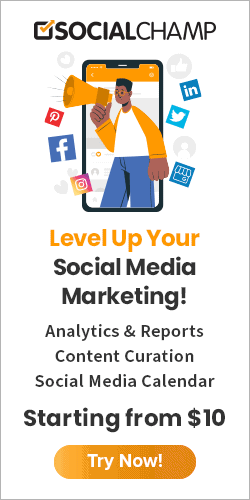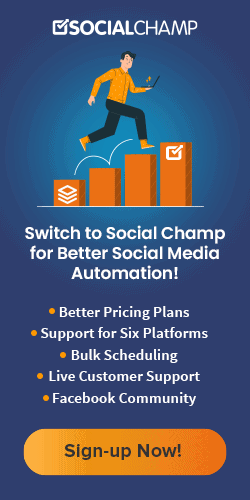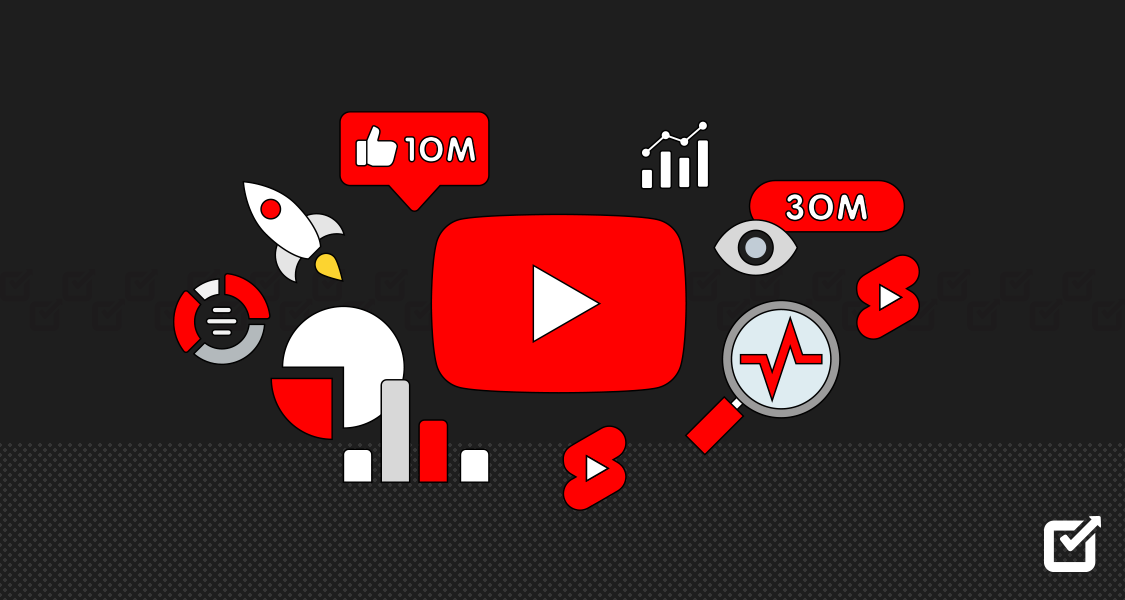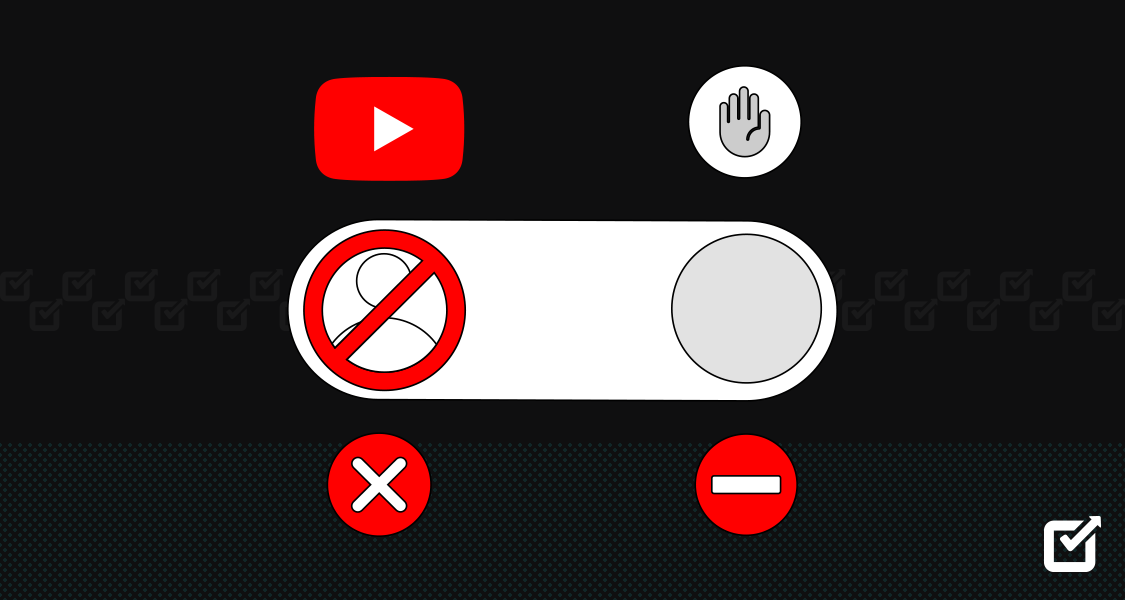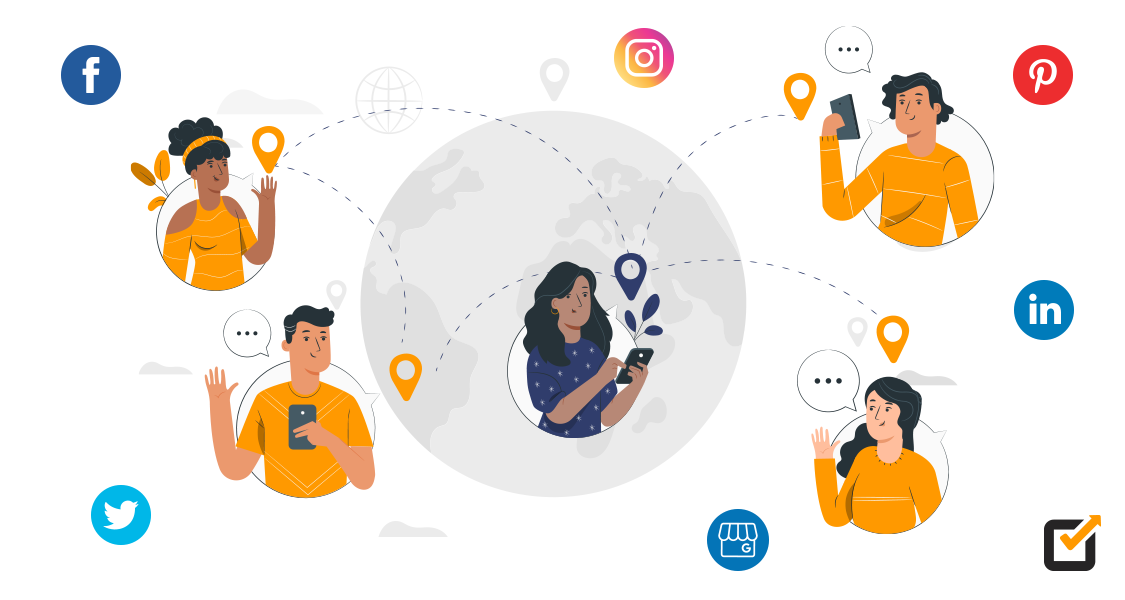Marketers constantly implement new and different marketing strategies to keep up with the latest trends. No matter what type of business or product you have, you just can’t be promotional all the time. You need to come up with relatable ideas to interact with your audience and make them buy your products.
One such thing is a Meme; they are powerful and witty, making them relatable to understand how brands leverage memes to fuel their engagement. We reached out to our community experts to get their thoughts on what they have to say about leveraging memes to amplify their engagement.
Whether you’re exploring the world of memes or contemplating how to buy bitcoin in canada, our experts share valuable insights that cater to diverse interests and inquiries within our community.
So, we popped the question, and here is all they had to say.
Expert Insights on Leveraging Memes to Boost Engagement
Ioanna Karelia
Founder at Be Your Maverick
When done correctly, leveraging memes can be an extremely successful way for brands to amplify their engagement and footprint online. Memes can quickly and easily connect with a broad audience, which can help effectively spread brand awareness.
However, it’s important to note that not all memes are created equal. In order for a meme to be truly effective, it needs to be timely, relevant, and clever. It’s also essential to make sure that the brand can be somewhat flexible with its image – after all, the whole point of a meme is that it’s meant to be funny and delightful.
——————–
Chris Grayson
Founder at Influencer Made
One of the most effective ways to encourage engagement is through the use of memes. Memes are highly shareable, and they’re a great way to add some humor to your posts. They’re also particularly effective with Gen Xers, who are more likely to engage with funny or relatable content.
So if you’re looking for a way to amplify your brand’s engagement and footprint online, leverage memes. They can be a powerful tool for driving up engagement and expanding your reach with the right approach.
Bottom Line:
Memes are particularly effective with Gen Xers, who are more likely to engage with content that is funny or relatable.
——————–
Harrison Hosking
Marketing Manager at Keak
Can brands leverage memes effectively to amplify their engagement and footprint online?
1000x yes. As an SEO expert and copywriter, some of the highest traffic and lowest difficulty keywords on Google are meme-based. I have used several of them to funnel traffic to sites. If you have a meme that is central to your industry or niche, there’s a reason for that. It obviously resonates with your demographic and can therefore be leveraged in many smart ways.
Around 61,000 people organically search for Wojak every month. For those of you that don’t know, Wojak is a ‘feels guy’ that has become a central and famous character within crypto and NFT communities. From an SEO perspective, this is a goldmine.
To anyone writing about crypto or involved in crypto, NFTs, or Finance, particularly if you have a younger target audience, the clever use of Wojak memes or references could skyrocket your engagement. This is just one of the hundreds of examples. Every industry has its meme.
——————–
John Hernandez
Copywriter & Digital Marketer
Marketers spend a lot of research and time studying how they can connect with their audience. Memes are a powerful medium that lets consumers express themselves.
Marketers can provide branded memes to allow the audience members to interact online and spread the brand’s message. It’s one of the many tools that can empower digital word of mouth. And not many brands are utilizing them, giving marketers ample room for opportunities.
——————–
Oscar Rodriguez
Founder at Ossie Rodriguez
For brands, memes present an opportunity to reach a wider audience and promote their products or services in a more relatable way. However, it’s important to note that not all memes are created equal.
For a branded meme to be successful, it needs to be relevant, timely, and, most importantly, funny. If done right, leveraging memes can be an effective way for brands to amplify their engagement and footprint online.
——————–
Simon Hansen
Blogger at Top Work Life
Absolutely. I believe that memes, if used right, can definitely amplify one’s engagement. However, one needs to be very careful with how these are used and tied into your digital marketing strategy.
Not only do you have to understand the context behind these memes and how they’re used, but you also need to make sure that these resonate with your audience. Like most things, some memes can go out of date or change meaning completely. Like other aspects of your strategy, making this a part of your strategy means staying on top of trends.
——————–
Dave Cimon
Co-Founder at Costumes Heaven
It totally depends on what age group of people your target audience falls in. Memes can take your business to the next level if it’s targeting a
young audience. Since the young audience is more attracted to memes and is extremely active on social media.
But if your target audience consists of 35+ age people, they might be searching for some serious information. The reasons why interacting with memes might not be a good idea.
——————–
Stella Scott
CMO at Easy Pay Day Loan
Yes, brands can leverage memes to grow their digital footprint and engagement. They can use this in-the-moment, light-hearted content to boost their brand awareness and online interactions. Memes give companies a personality that endears them to their clients and followers.
They create an easy and fun way for the companies to connect with and engage their customers. Such interactions are likely to imprint themselves on a client’s memory along with the brand’s or product’s name.
The use of memes is sub-categorized as viral marketing due to their extensive reach. While people can ignore an advertisement no matter how many times they see it, a humorous well-placed meme is hard to ignore. Memes also have a high recall value, and organizations can leverage this to their advantage. Brands can either create their meme or spin a popular one and apply it to their brand or message.
Memes are also effective due to the long periods people spend scrolling through their social media, where memes are native and popular.
——————–
Carrie Mok
Marketing Lead at EPM
It really depends on your audience and the meme itself. B2C brands have a lot more leeway to use memes, but it doesn’t mean that B2Bs can’t
have fun either! The most important factor, regardless of whether you are a B2B or B2C looks at how the meme and its message fit your
brand’s overall tone of voice, goals, and relevance.
Can a manufacturing business make use of a cat-related meme? Probably not. But if they were on a recruitment drive for more junior staff members, they could create a video of some of their team taking part in a TikTok challenge to highlight the great company culture. Another aspect to focus on is timeliness. Often, for memes, you have to act quickly to maximize engagement, but that shouldn’t override the appropriateness of the meme itself.
——————–
Alon Golan
Product Marketing Manager at odix
Absolutely. Experienced men than me once said that a picture is worth a thousand words. In the millenniums era, you can say that a Meme is worth thousands of pictures. While initially looks like an element lacking a professional statement, a Meme provides great value in the right hands. It has short content that gathers moving images with text and a semi-hidden, humorist sub-text that makes a person think.
Nowadays, it is known that we are distracted by so many items that we automatically censor the information. A meme captures our attention as it is something we can see for a second a consume a lot of information without “investing” our time.
A much higher percentage of someone will stop their feed from checking a Meme. This results in a better engagement rate, higher CTA, and a much higher comments/share rate.
The only rule is that you must be able to be original, unique, elegant, and specific for your target audience segment.
——————–
Aaron Grey
Co-Founder at Agency 101
Memes are the native mode of communication for Millennials and Gen Z
These generations grew up using the internet; they witnessed memes evolve from entertaining images into the perfect mode of transport for information, opinions, and humor.
While it seems like almost anything can be a meme, proper execution takes a lot of work — especially for the uninitiated. Native meme users understand the difference between organic memes and advertisements, and shoddy attempts will harm your brand’s reputation.
For brands to leverage memes effectively, they need to speak the language of the audience they’re communicating with. *This means studying the type of memes they respond to and using meme formats that these users recognize. It’s not a matter of duplication but rather expanding upon current trends and adding value.
What many companies fail to recognize is that memes don’t have to advertise your company overtly. In fact, they don’t have to relate to your company at all. If you develop a reputation for being funny and relatable, that alone will keep users coming back. Proper meme usage invariably leads to more likes, comments, and shares, amplifying your online footprint.
——————–
Mila Garcia
Co-Founder at iPayday Loans
Memes have revolutionized digital marketing for the better in that they provide brands with an opportunity to go against the grain of using bland and boring advertisements by adding a human touch to their content strategy through humor and relatability.
It also provides brands with an authentic voice that allows them to foster a sense of community by showing audiences that they are easily approachable, instead of just another robotic company that only seeks to promote its products and services.
And when leveraged using different content formats, it can even help brands significantly improve engagement and shareability across multiple marketing channels without spending so much money developing and promoting original content material.
——————–
Steven Walker
CEO at Spylix
Brands may use memes to connect and engage with their audiences on social media for a low cost. They can assist in establishing brand equity and awareness by sharing fun material. Memes are a great way to join current conversations and catch the cultural zeitgeist. They show a brand ‘gets it.’
When considering whether to use memes in their social media campaigns, brands should examine audience, authenticity, and appropriateness.
Audience: Young people are more into memes than older people are. 54 percent of US and UK internet users ages 16 to 23 said they had looked at a meme on the survey day, and 41 percent of those aged 24 to 37 said they had. People ages 38 to 56, on the other hand, did the same thing. Only 21% of people ages 57 to 64 did the same.
Authenticity: Even if the target audience is in the correct age group, memes may not be right for every brand, even if they are. You can look at Cuts Clothing, for example. Although most of its customers are between the ages of 28 and 40, the company has decided not to use memes in its marketing. Memes are not a good way to market the company.
Appropriateness: Memes are supposed to be culturally relevant because they often touch on sensitive or controversial things. A study by HubSpot and Talkwalker found that between July 2019 and August 2020, the most popular memes were COVID-19, the economy, and politics, for example.
——————–
David Zimmerman
Marketing Consultant at Reliable Acorn LLC
Whether or not your brand should use a meme depends on understanding your audience. If you’ve taken the time to develop a brand, you should know your target audience and what they’re like. For instance, if you know your customer is young, active on social media, and visits with a smartphone, I’d suggest memes might be a way to communicate with them effectively.
However, if your customer is older and not savvy about the internet, they might not understand them. For example, I recently shared a meme on Facebook, to celebrate my alma mater playing in the NCAA basketball championship.
It was interesting to see the responses: my younger, internet-savvy friends understood what I was trying to say. My older friends didn’t even understand what the image meant. So, while your marketing intern might be a meme-master and have high karma on HighQualityGifs, that might be a miscommunication that alienates your customers if they don’t know what that means.
——————–
Christian Velitchkov
Co-Founder at Twiz
It is all about forming a community and engagement by sharing something that everyone understands. Using this strategy, you can build a sense of belonging, a strategy that platforms like Facebook have been savvier at for years.
This is precisely why your brand should include memes in its content marketing strategy. You could create and share on-target memes that engage your audience, build brand loyalty, and even explore new markets if you are able to create and share on-target memes.
Content marketing strategies of some of the world’s most recognized brands include memes. The reasons are as follows:
– Engagement Increase
– Engage Your Audience
– It’s easy to create
– You are allowed the Ability to Be Creative
– Allow You to Show Off Your Brand’s Personality
——————–
Edward Ratner
Founder and CEO at Edammo
As an inexpensive and effective means of connecting and engaging with their audiences, memes can be powerful for brands. Memes provide users with a way to participate in the cultural zeitgeist and to have conversations that are of the moment. Memes demonstrate that a brand understands the moment.
The meme has evolved into one of the most successful forms of advertising and communication. Additionally, they are the most effective means of interacting with your target audience.
Memes appeal to people because they are funny, easy to understand, and trendy. Several websites, groups, and even entire pages on social media platforms are solely dedicated to memes. Social media pages are now not the only way brands are using social media. Brands are also creating memes.
——————–
Mushfiq Sarker
Founder and CEO at Stream SEO
Yes, brands can definitely leverage memes effectively to amplify their engagement and footprint online. In fact, many brands are already doing this. Memes allow brands to tap into pop culture and connect with their audiences deeper.
By creating or sharing memes that are relevant to their target audience, brands can increase their visibility and reach. Additionally, memes can help to build brand loyalty and trust. When customers see that a brand is participating in the same culture that they are, it can create a sense of connection and rapport.
However, there are also risks involved. If a brand misuses or appropriates a meme, it can face backlash from consumers. As such, brands need to tread carefully when trying to leverage memes. When used correctly, memes can help brands to reach a wider audience and deepen their connection with consumers. However, they must be used sensitively and with care to avoid damaging the brand’s reputation.
——————–
James Watts
CEO at Own The Grill
Yes, in my opinion, I do believe that brands can effectively leverage memes. However, this needs to be done in the correct manner. In not, all
instances are memes suitable to use, and it’s up to the discretion of a company to see what memes are suitable and which ones should be avoided.
If there is the opportunity to focus on humor, then this is a good way to incorporate memes, but they shouldn’t be used for the sake of it.
If a particular meme is popular at the moment, then when it’s utilized correctly, this can amplify engagement and footprint online. It’s all about choosing the right meme, the timing, and connecting the meme to your brand to ensure that it’s being used in the right way.
——————–
Vera Tarlov
Marketing Manager at FortVision
Yes, brands can and should leverage memes to amplify their engagement. Just remember: the memes need to be relevant to the brand/ product/ service, and at the same time, they should be used correctly and clear enough for users to understand the meme.
If done properly, it will make your brand seem more creative, modern, and can create a positive buzz.
——————–
Animesh Das
SEO Executive at First Principles
The query you have raised is relevant in the current digital marketing era. We have been leveraging memes for our webinars’ marketing & other content distribution aspects. Memes can be a powerful and cost-effective way to connect with the target audience.
Driving insight from my personal experience, I’ve witnessed that the engagement rate on memes is high due to the humor element mingled, and satirical memes also go viral when placed with the right brand message.
Memes’ effectiveness can amplify brand awareness via in-the-moment, light-hearted content. With in-trend memes, and content spinning it with your brand, you can bring your audience to enter of-the-moment conversations & jumpstart a bandwagon of the cultural zeitgeist.
It requires adhering to a particular framework to create memes for the brand, stoke a problem or think of a problem you can aggravate or make fun of. But when you use meme marketing, you have to be cautious as many brands have fallen flat on their face trying to follow the internet trends.
My suggestion is to avoid any of the memes with dark humor as often such memes can alienate specific groups of individuals and lead them to reject an associated brand.
Rather, to gain engagement, you can inform the audience about your brand deals, offers, or any upcoming events via meme marketing. Reposting the user-generated content with positive relevance to your brand also brings more engagement. Focus on the appropriateness; sometimes, a trending meme touches on sensitive or controversial topics.
An in-depth assessment is required regarding how you will project such a meme without creating any negative impact. You can also explore examples of brands that are crushing on meme marketing and can draw inspiration. I roll to brands such as Netflix, Pizzahut, or Gucci to get inspiration as they play the meme game well.
——————–
Ray Blakney
CEO at Live Lingua
To leverage memes effectively, first pick out a currently trending meme. Then create a version of the meme that corresponds with your business. For example, if a trending meme shows an excited cartoon character, you can add a phrase about being excited over your company’s new upcoming product launch.
It is important to make sure the meme is timely and funny, as this will help to ensure the most engagement. Post the meme on your business’s social media channels with relevant hashtags, and make sure to reply to every single comment to amplify engagement and discussions between followers.
——————–
Adam Hempenstall
CEO at Better Proposals
I think memes work great for a specific audience group, and if that coincides with your target audience, that’s great. You need to understand your audience and know if this type of format would work for them.
Certain brands can achieve great success with custom memes. However, I don’t think it’s a great strategy for everyone.
——————–
We would like to thank all of our contributors for sharing their expert advice with us! 🙂


























